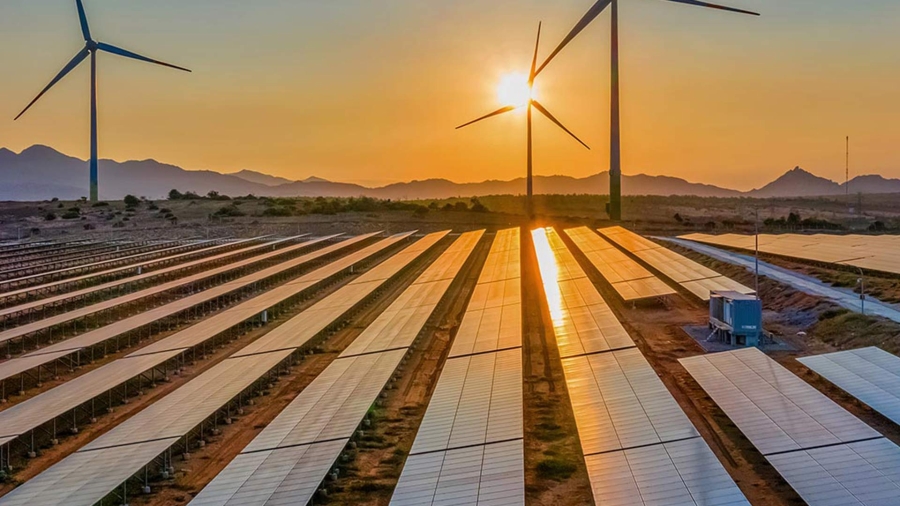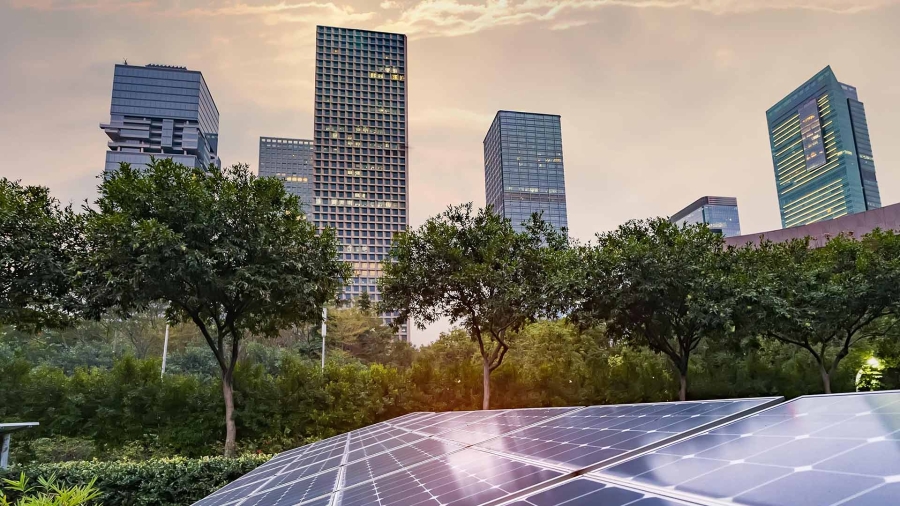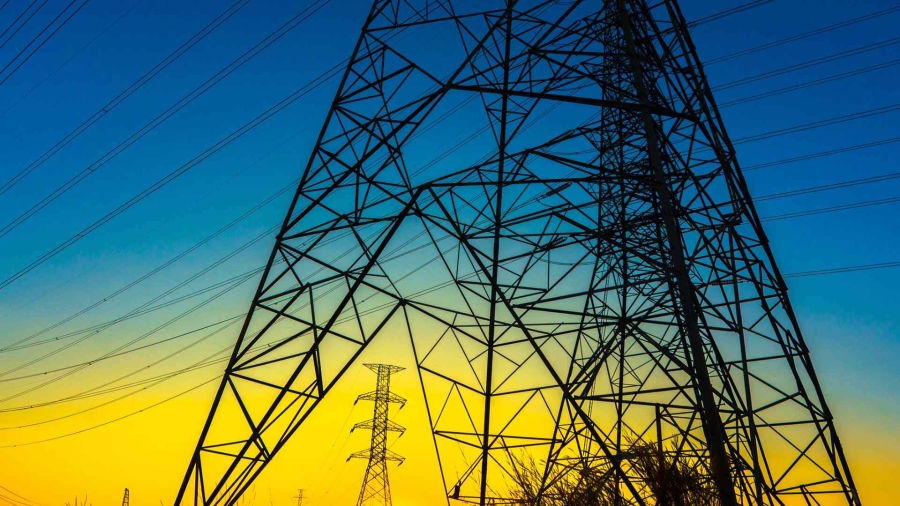Interest in renewable energy has skyrocketed over the past several of years. Organizations worldwide are making commitments to transform their operations and achieve anywhere from 50% to 100% of energy procurement from renewable sources.
As corporate interest in clean technologies continues to boom, the market is simultaneously evolving and becoming increasingly complex. Companies need support to reach their renewable energy targets in a manner that maximizes business performance.
One of the most effective ways for organizations to ensure they’re entering the right clean energy deal is to work with a trusted advisor. Many large companies choose to meet their renewable energy goals using a power purchase agreement (PPA).
What exactly is a PPA?
Defining the mechanismA PPA is a reciprocal financial relationship between an electricity generator, the seller, who develops and owns the project, and a dedicated purchaser of the electricity, the buyer. The electricity can be generated by renewable sources, mainly solar and wind.
PPAs play a key role in financing and developing electricity projects. Electricity is purchased by the buyer at a pre-agreed price structure per unit for a set period, which provides certain cash flows for the project. In a corporate PPA, the electricity buyer is a business or company, rather than a utility or the public sector.
Organizations should be aware that there are several ways to go about entering a PPA. It’s in businesses’ best interest to understand the nuances between various PPA structures to make a decision that makes the most sense for them.
PPAs may be broken down into direct PPAs or a virtual PPAs (VPPAs):
- In a direct PPA, a contract is established between a company and a power-producing facility to purchase the electricity generated by that facility. Companies with a large energy footprint in a single state or narrow geographic region are typically the best candidates for this type of PPA because the clean power is directly delivered to the account of the facility purchasing that energy. Direct PPAs can be structured in a variety of ways and may require additional parties, such as retail providers or local utilities.
- In a virtual PPA, the buying organization does not take delivery of the renewable electricity being generated. Instead, the company contracts with the generating facility for the power, which then re-sells that electricity to the market for the current market price. As a result, these projects can be located anywhere in the United States, or anywhere in Europe, while the buyer still receives financial and environmental benefits. It is important to note that VPPAs are swaps and may involve significant risk of loss and may not be suitable for everyone. Companies should carefully consider whether such trading is suitable for them in light of their financial condition.
VPPAs have typically been the most popular structure among corporate buyers.
Why use a PPA?Companies are taking bold stances on how much renewable energy they want to incorporate into their energy portfolios and challenging themselves to meet those goals. But achieving 100% renewable energy does not happen overnight – many organizations with public targets still have quite a way to go to achieve their goals. This scenario is commonly referred to as the ambition gap.
As corporations look to close in on the ambition gap, they are increasingly turning to PPAs to advance their sustainability objectives. From 2009 through to mid-2019, organizations procured more than 40 gigawatts of renewables via power purchase agreements in the Americas, Europe, Asia and Australia. The majority have been in the Americas to-date.
There are now more than 1,000 organizations signed on to RE100, a global business initiative committed to 100% renewable electricity and over 1000 companies taking action on Science Based Targets – a strategy with a clearly defined pathway that specifies how much and how quickly organizations need to reduce their greenhouse gas emissions. And this list grows larger by the day.
PPAs are providing organizations with an efficient route to achieve their commitments to renewable energy goals by sourcing energy from offsite providers. Joining forces with an experienced energy supplier can help. Some of the reasons corporates are moving this direction include:
- Getting closer to environmental goals and addressing a sizeable portion of their electricity footprint.
- Greater flexibility by engaging with projects that are not limited to their immediate location or proximity. Without having location as a concern, organizations can address their electricity footprint across operations that exist in multiple geographies and/or in regulated electricity markets with fewer renewable energy options.
- Furthering environmental, social and governance (ESG) initiatives by helping organizations respond – or be proactive – to pressures from stakeholders, customers, investors, value chain partners and employees.
In addition, according to a recent Harvard Business Review survey, investment leaders are looking toward PPAs to help them take meaningful steps to integrate sustainability issues into their investing criteria – especially as stakeholders take more interest in how shareholders are improving their environmental, social and governance (ESG) performance. It’s worth noting that PPAs don’t require capital expenditure (CapEx), allowing businesses to make a significant impact on sustainability initiatives with very low upfront costs.
For these reasons, we have seen a large trend toward PPAs over the past several years.
Notable corporate PPAsFrom home supplies to retail companies and telecom to aerospace, corporations in most industries have either entered or are considering using PPAs to acquire renewable energy to meet their goals. Just a handful of PPAs signed in recent years include:
- The Clorox Company signed a 12-year, 70MW VPPA for the purchase of renewable energy beginning in 2021. Representing about half of Clorox’s 100% renewable electricity goal in its operations in the US and Canada, this agreement is expected to help Clorox accelerate achieving its goal in 2021, four years ahead of the company’s original plan. It has also enabled the supplier, Enel Green Power, to further its solar Roadrunner project creating a solar plant that generates up to 1.2 terawatt-hours (TWh) of electricity annually, while avoiding an estimated 800,000 metric tons of carbon dioxide emissions per year.
- Signify, the world leader in lighting, contracted for 42MW of renewable energy with the Kisielice wind farm in Poland. The VPPA was the first of its kind in Poland, where 80% of energy is currently generated from coal. It will address 25% of the company’s global electricity footprint and be a major milestone on Signify’s journey to become carbon neutral in 2020.
- Sprint announced a 12-year VPPA for 173.3MW of new wind energy that will be sourced from wind farms in Texas and enable the company to significantly reduce its carbon footprint and achieve approximately 30% renewable energy for its total electricity portfolio. The agreement allows the company to source enough renewable energy to power the equivalent of more than 54,000 US homes and will reduce carbon emissions equivalent to removing more than 96,000 cars from the road annually.
- The well-known retailer Gap Inc announced that it has signed a 90MW VPPA that was one of the largest offsite renewable energy contracts by an apparel retailer. The 12-year agreement will enable the company to reach its 2020 goal to reduce Scope 1 and 2 greenhouse gas (GHG) emissions for its owned and operated facilities by 50% compared with 2015. The company also announced it has set a goal to reach 100% renewable energy across its global owned and operated facilities by 2030.
- DaVita Inc signed two VPPAs facilitating the development of clean energy projects to achieve 100% renewable energy by 2022. The projects will allow the company to generate as much renewable energy as the amount of electricity used by the company’s North American operations.
We have seen more businesses signing PPAs to address their energy and climate goals. In particular, we have seen more solar PPAs – perhaps as a result of the cost of solar technologies dropping at a quicker rate compared with wind energy.
The future of PPAsWe’ll continue to see companies investing in PPAs for many reasons. One of the most prominent reasons is that companies are being held more accountable by their customers, stakeholders and investors to take environmental action. Companies are also working to close the ambition gap, as their deadlines for achieving renewable energy goals quickly approach.
Many companies want to be totally reliant on renewables at some point in the near future – and that’s not considering companies that have not yet made their commitments public. We’ve traditionally seen larger organizations enter these agreements, but as more pressure is put on businesses to turn to renewable energy, smaller players are likely to start utilizing PPAs to achieve these goals.
The global market for renewable energy PPAs is expanding, as well. Corporate renewable energy goals are global and their aspirations will accelerate renewable energy procurement outside of the United States, where they have historically seen the most success. We’ll see companies entering into PPAs in increasing numbers in markets such as Europe and Australia and in new geographies.
We won’t see VPPAs going anywhere anytime soon – they are evolving in a way that makes it easier for corporations to participate in the market. As we look to the future, the question is – how will PPA structures and options continue to evolve alongside a maturing international renewables market to meet the ever-growing demands of corporate buyers?
To speak with a member of our experienced PPA advisory team about how your organization can use this mechanism to meet its goals, please contact us today.














